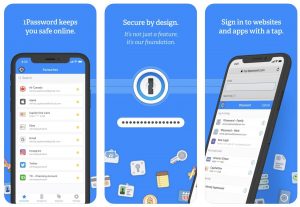Nonprofit EducationSuperHighway is looking to help the millions of students struggling to learn as COVID-19 keeps everyone home.
The effects of the coronavirus pandemic will be felt for years to come, but where they may leave one of the biggest marks is on the education system. Since efforts to contain COVID-19 began, 125,000 schools have had to close their doors across the country and over 55 million students had to quickly adapt to digital distance learning.
But dozens of cities and states have struggled to provide students with enough devices or strong enough Wi-Fi connections to keep them learning on par with their peers. After nearly two months, experts have said there are more than nine million students who lack connectivity at home are at a particular disadvantage in this new environment.
To help school districts address this issue, nonprofit organization EducationSuperHighway has jumped in kickstarting the Digital Bridge K-12 to help respond to this immediate crisis while also identifying strategies to help school districts and policymakers address the home access gap.
SEE: Rural America is in the midst of a mental health crisis. Tech could help some patients see a way forward. (cover story PDF) (TechRepublic)
EducationSuperHighway’s CEO and founder, Evan Marwell, said that the organization identified four major issues that need to be dealt with.
“The first was that school districts don’t really know which kids don’t have internet access. The second is that even when they know that a kid doesn’t have internet access, they don’t know which internet service providers can provide service to that kid at their house, they don’t know what best deal they offer is and they don’t know how to sign them up for that,” Marwell said.
“The third problem is that even though schools have literally tens of millions of devices, laptops, Chromebooks, and iPads, the vast majority of schools have never sent devices home with kids, so they needed to figure out how to maintain these devices when they’re at home and how to make sure kids don’t use them for things that aren’t school related. The last problem is we need to figure out how to pay for all of this stuff, especially the internet access, which we think is about a $2 billion per year problem to provide service to these nine million kids.”
SEE: Coronavirus: Critical IT policies and tools every business needs (TechRepublic Premium)
Marwell explained that EducationSuperHighway was created eight years ago to upgrade the internet access in every public school classroom in America so that every student had the opportunity to take advantage of digital learning.
When they started in 2012, just 10% of classrooms in the country actually had enough internet access so students and teachers could use technology in the classroom for teaching and learning.
The organization spent eight years working with federal policymakers, 85 governors in all 50 states and school districts across the country to achieve its goal. Today 99% of the classrooms in America have enough bandwidth to use technology and 94% of schools in the country report that they’re using technology in at least half their classrooms every week.
With the success of the project, there has been a tremendous amount of adoption in the use of digital learning to enhance teaching and learning around the country. Having accomplished its goal, Marwell said leaders planned to sunset the organization on Aug. 31.
But then the coronavirus pandemic came and suddenly they received hundreds of calls from the people they worked with asking for help in managing the process of teaching and learning from home.
“Suddenly, kids were trying to learn from home and teachers were trying to teach from home. The good news is that because of all the work that we and others have done to make technology part of the classroom learning environment, we actually had an opportunity to help kids continue to learn even though they couldn’t come to school by leveraging technology,” Marwell said.
“But the bad news is that there are at least nine million kids in the country that don’t have internet access at home. For those kids, continuing to learn during the pandemic was really a problem. As a result, at the beginning of March our phones started ringing off the hook. We were getting calls from policymakers in D.C., calls from governors offices in state capitols, calls from school districts all saying ‘hey, you helped us solve this school broadband problem, now can you help us solve the problem of nine million kids who don’t have internet access at home.”
So the organization jumped back into full speed, working to organize help for school districts thrust into an unprecedented situation through a program they’ve named Digital Bridge K-12.
Even though the nonprofit just started a few weeks ago, Marwell said it has already completed one of the first goals of the new project. They’ve created a detailed website and started work on a playbook to help states and school districts figure out which kids need internet access and need devices.
The website will also include a look-up tool that will allow school districts to enter a child’s ZIP code and figure out which internet service providers operate in their area. The tool will also list all of the best deals available and the easiest ways to sign up.
EducationSuperHighway is also rolling out a playbook that tells school districts how to go about setting up a device lending program while also kickstarting advocacy efforts to get funding for programs like this. The goal is to get everything set up by June 30 so that schools can spend the summer putting things in place in preparation for the fall.
Since distance learning began in March, schools have noticed that low income and disadvantaged students are missing class at alarming rates, prompting fears that millions of kids will fall behind. But Marwell hopes that with more schools providing devices to kids and getting children online, they will be able to keep more kids in school and engaged.
Marwell said EducationSuperHighway is now focused on doing a series of pilot programs with school districts and states in figuring out which children don’t have internet access at home. They’re retrofitting a tool they used in their original mission for the new goal. For years, the organization tested school buildings to figure out what the internet speed was, and they’re now looking to use the same thing with their home access assessment tool.
“That will give us a lot of data about who does and doesn’t have internet access. One of the big next steps is rolling out that tool and trialing it in some pilots with school districts and states,” Marwell said.
“The second thing is working on the service provider side. We’ve got the basic tool of being able to look up who the service providers are at the ZIP code level but we want to take that down to the address level so that you can literally put in a child’s address and it will tell you, who the service providers are and what their best deal is. It should say ‘click here’ and it will take you to the sign-up page to get it done.”
The nonprofit is also looking to work with internet service providers to get them to standardize their deals because one of the things parents have told the group is that there is an immense amount of confusion over what is being offered and over how to sign up.
In addition to the work with internet service providers, EducationSuperHighway is looking to push the federal government into providing funding for more robust device lending programs as well as money for broadband internet in case certain families cannot afford it. Marwell also noted that schools have had trouble sourcing devices like Chromebooks and others to give to students in need.
“We believe in the power of digital learning to level the playing field for all students,” said EducationSuperHighway board member Jonathan Kaplan. “In this time of the pandemic, this means we are focusing our efforts on ensuring students across the entire nation can use technology to continue learning, both inside and outside of the classroom.”
Also see

cienpies, Getty Images/iStockphoto
Source of Article




